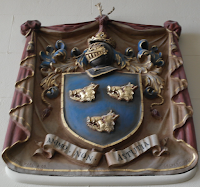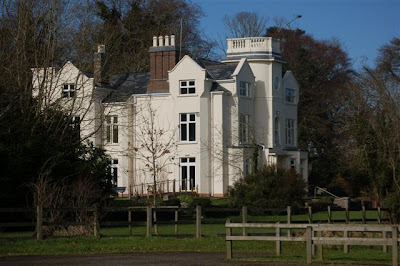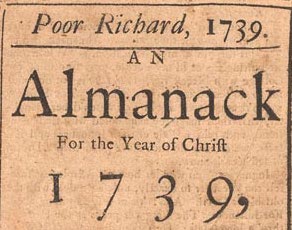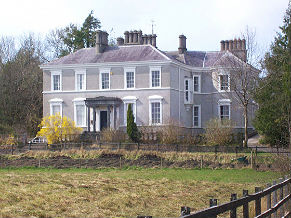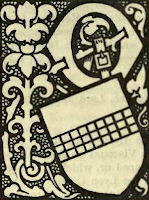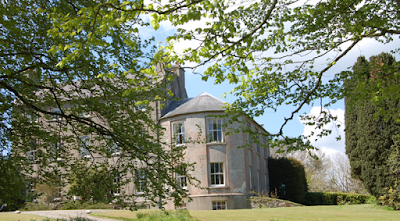This was one of the very few native families which had been dignified by the Peerage of Ireland. The O'Callaghans were formerly princes of the province of Munster, and were seated at Dromaneen Castle. Their Chief, CORNELIUS O'CALLAGHAN, enjoyed very extensive territorial possessions in 1594, according to an inquisition taken by Sir Thomas Norris, Vice-President of Munster, in that year.
From this Cornelius descended
CORNELIUS O'CALLAGHAN (c1681-c1742), a very eminent lawyer, MP for Fethard, 1713-14, who married Maria, daughter of Robert Jolly, and had three sons, the youngest of whom,
THOMAS O'CALLAGHAN, wedded, in 1740, Sarah, daughter of John Davis, and had, with a daughter (married to Robert Longfield, of Castle Martyr), an only son,
CORNELIUS O'CALLAGHAN (1741-97), MP for Fethard, 1768-85, who was elevated to the peerage, in 1785, in the dignity of Baron Lismore, of Shanbally, County Tipperary.
His lordship married, in 1774, Frances, second daughter of Mr Speaker Ponsonby, of the Irish House of Commons, and niece, paternally, of William, Earl of Bessborough, and niece, maternally, of William, 3rd Duke of Devonshire, and had issue,
CORNELIUS, his heir;He was succeeded by his eldest son,
Robert William (Sir), GCB, lieutenant-general;
George;
Louisa; Elizabeth; Mary.
CORNELIUS, 2nd Baron (1775-1857), who was created, in 1806, VISCOUNT LISMORE, of Shanbally, County Tipperary.
He married, in 1808, the Lady Eleanor Butler, youngest daughter of John, 17th Earl of Ormonde, and sister of the Marquess of Ormonde, by which lady he had issue,
Cornelius;His lordship, Privy Counsellor, 1835, Lord-Lieutenant of County Tipperary, 1851-57, was succeeded by his second son,
William Frederick;
George Ponsonby;
Anne Maria Louisa.
GEORGE PONSONBY, 2nd Viscount (1815-98), an officer in the 17th Lancers, High Sheriff of County Tipperary, 1853, Lord-Lieutenant of County Tipperary, 1857-85, who wedded, in 1839, Mary, daughter of George Norbury, and had issue,
George Cornelius Gerald (1846-85);His lordship's sons both predeceased him, when the titles became extinct.
William Frederick Ormonde (1852-77).
SHANBALLY CASTLE, near Clogheen, County Tipperary, was built about 1812 for Cornelius O'Callaghan, 1st Viscount Lismore.
It was said to have been the largest of John Nash's Irish castles.
Shanbally was long and irregular, of a silver-grey ashlar.
This great mansion was 281 feet above sea-level, and about 80 feet above the level of the adjacent brook.
Shanbally Castle had numerous machicolations, towers and battlements.
The entrance front was pointed-arched, with a vaulted porte-cochere under a porch-tower.
The garden front had a round tower at one end and an octagonal tower at the other, with a central feature boasting two square turrets.
There was a stylish Gothic veranda.
Shanbally demesne is beautifully situated on low ground, in the centre of the valley, between the Galtee mountains on the north and the Knockmealdown mountains on the south.
It commands the most magnificent views of the slopes, escarpments, summits, and groupings of both of these alpine ranges.
Shanbally Castle was situated in a picturesque landscape, bounded to the north and south by two mountain ranges, the Galtees and the Knockmealdowns.
It is said that Shanbally bore a remarkable resemblance to Nash and Repton's joint venture, Luscombe Castle in Devon, though Shanbally was considerably larger.
The 2nd and last Viscount left Shanbally to his cousins, the Lady Beatrice Pole-Carew and the Lady Constance Butler, daughters of the 3rd Marquess of Ormonde.
Shanbally was sold in 1954 by Major Patrick Pole-Carew.
Following attempts by the Hon Edward Sackville-West (5th Lord Sackville) to rescue the Castle, it was demolished in 1957 and its ruin was blown up.
The following is a composition by Bill Power of the Mitchelstown Heritage Society:
Few acts of official vandalism rival the decision by the Irish Government in 1957 to proceed with plans to demolish Shanbally Castle.
Built for Cornelius O'Callaghan, 1st Viscount Lismore, ca 1810, the mansion was the largest house built in Ireland by the famous English architect, John Nash.
Built for Cornelius O'Callaghan, 1st Viscount Lismore, ca 1810, the mansion was the largest house built in Ireland by the famous English architect, John Nash.
When the Irish Land Commission purchased the Shanbally estate in 1954, one of the immediate questions which it addressed was what should become of the castle.
For a brief period it seemed that a purchaser could be found in the form of the London theatre critic Edward Sackville-West, 5th Lord Sackville, who had a tremendous love of the Clogheen area, which he had known since childhood.
He agreed to buy the castle, together with 163 acres, but pulled out of the transaction when the Irish
Land Commission refused to stop cutting trees in the land he intended to buy.
Consequently, by 1957, the fate of the mansion was sealed.
The Irish Land Commissioners, with Irish Government approval, decided to proceed with plans to demolish the castle on the grounds that they had no use for it and that it was in poor condition.
They ignored suggestions that a religious community might be found for the building, and also
rejected its suitability as a forestry school.
In that year, Professor Denis Gwynn, wrote an article in the Cork Examiner in which he exhorted the authorities to reverse their decision:
Land Commission refused to stop cutting trees in the land he intended to buy.
Consequently, by 1957, the fate of the mansion was sealed.
The Irish Land Commissioners, with Irish Government approval, decided to proceed with plans to demolish the castle on the grounds that they had no use for it and that it was in poor condition.
They ignored suggestions that a religious community might be found for the building, and also
rejected its suitability as a forestry school.
In that year, Professor Denis Gwynn, wrote an article in the Cork Examiner in which he exhorted the authorities to reverse their decision:
"Shanbally Castle has been well known for years as one of the most graceful and original examples in Ireland of late Georgian architecture," he said. "Its formal gardens, which have run wild, could easily be brought back to order."The Professor pointed out that Shanbally Castle was designed by one of the most famous of all modern architects, who also planned all the well known terraces that surround Regent's Park in London, and so many other celebrated buildings in England, `What conceivable justification can there be for incurring the great expense of demolishing this unique Irish mansion,' he asked.
"All around the house, with its long avenues, the land has been admirably laid out and planted with fine trees in groups to enhance the views and to produce valuable timber,' he continued. `More recently there has been wholesale clearance of the timber. Last summer I saw cutting in progress at many places, and big gaps had been made in the boundary walls to assist removal of the felled trees.
Describing the order to demolish the castle as an `act of vandalism,' Professor Gwynn called for an inquiry into the circumstances of the decision. There is no sense whatever in squandering public money on the destruction of a beautiful house which is well known to students of Nash's domestic architecture,' he added.But Professor Gwynn's article was already too late: Despite some local opposition and widespread critical comment, the roof was removed and some of its impressive cut stones were being removed by hand and broken into smaller pieces for use in road building.
The house, with its twenty stately bedrooms, extensive drawing rooms, dining room, library, marble fireplaces and mahogany staircase was rapidly reduced to a state of ruin.
In 1960, The Nationalist newspaper reported the final end of a building which was once the pride of the neighbourhood: "A big bang yesterday ended Shanbally Castle, where large quantities of gelignite and cortex shattered the building", it said.
In the weeks prior to the explosion, demolition workers bored 1,400 holes, 18 inches above ground, into the cut stone of the castle.
Each hole was then filled with explosives which were detonated on the 21st March, 1960.
Almost all of this material was used for road building.
The protests against the demolition of Shanbally Castle came from some local sources, An Taisce and a few academics such as Professor Gwynn.
Politically, the Fianna Fail Government had no love for houses of the ascendancy.
However, remarkably, it was from within the ranks of Fianna Fail that the only political voices were raised against the demolition plans, albeit privately.
One was Senator Sean Moylan, the Irish Minister for Agriculture until his death in 1957, and the other was his close friend and TD from Mitchelstown, John W Moher.
They were over-ruled by the Cabinet and failed to get wider political support, even from opposition deputies.
When the explosion finally came, the Irish Government saw fit to issue a terse public statement in response to protests favouring the retention of Shanbally Castle for the nation.
"Apart from periods of military occupation the castle remained wholly unoccupied for 40 years," said the statement.
First published in October, 2011.



